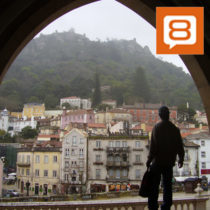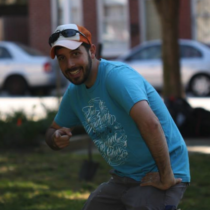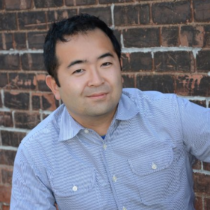Landscape Architecture for Landscape Architects › Forums › RESEARCH › Research Project Suggestions
- This topic has 1 reply, 6 voices, and was last updated 16 years, 2 months ago by
 Ryan A. Waggoner.
Ryan A. Waggoner.
-
AuthorPosts
-
September 21, 2009 at 1:28 am #172881
 Robert TothParticipant
Robert TothParticipantHi, I am a Senior doing an independent study project this semester entitled “The Evolution of American Parks.” It is an interdisciplinary look at the evolution of green spaces in American history, focusing on architectural design, cultural meaning, influences, etc. The course follows a largely historical time line, starting with early views on the environment; cemetery design; the works of Downing, Olmsted, L’Enfant, Vaux; national parks, riverfronts, greenways, and ends with a brief look at landscape urbanism and suburbia.
As part of the final grade, I need to do a research project that is relevant to the topic of the course. Since the independent study is under the auspices of the American Studies Dept., the content needs to focus on some aspect of American landscape history, urban planning, natural history, parks, etc. The format is totally open; however, there must be some writing component to the project, although it need not be a full blown 20 page paper.
I was wondering if anyone could offer suggestions on possible topics? I prefer not doing solely a large research paper; it would be nice if I could incorporate some creative aspect. I am really lost on trying to think of topics. Any help you can offer is greatly appreciated! If I need to clarify anything, please let me know.
September 21, 2009 at 7:00 pm #172889 Ryan A. WaggonerParticipant
Ryan A. WaggonerParticipantHey Robert,
Not sure if you’ve seen this before, but William Whyte’s “Social Life of Small Urban Spaces” might be a great place to start. I used this as a basis to do a study of college campus places and spaces, which turned out to be a really fun project. I ended up writing a 40 page paper kind of by accident as I went through it, because it became so interesting. Here is a link to a website that may help, and one of the videos:
http://landscapeandurbanism.blogspot.com/2009/09/video-social-life-of-small-urban-spaces.htmlHope that helps, good luck!
September 21, 2009 at 7:39 pm #172888 Trace OneParticipant
Trace OneParticipantHere’s one – how about ‘
street closings, their conceptual origins, (the ‘commons””, Jane Jacobs, Wlm Whyte..), their proliferation, evolution, and subsequent devolution..
Charlottesville’s Maine Street is a good example..San Antionio Riverwalk. Current – Broadway – (Manhattan..) Go there and do interviews..even the High line..What part of the country are you located?
I love school…You are so lucky…I hope you don’t mind if I bother you with other ideas if any come to me!
🙂September 22, 2009 at 2:03 pm #172887 Kevin J. GaughanParticipant
Kevin J. GaughanParticipantMight be interesting to do research on the history of american craftsman and artists and their influences on park design throughout the decades. I think in the era of contemporary gardens and parks, we have lost some of the richness in details and craftsmanship that we see in examples like central park. It would be interesting to see why that is. Have the craftsman disappeared? Have the designers stopped collaborating with artists? Have decreasing budgets killed the possibility? Or are people to impatient to wait for craftsman to create these masterpieces and rather pay some guys 10 dollars an hour to pour concrete in relatively simple forms which create uninteresting, crisscrossing lines?
Just an idea 🙂
September 22, 2009 at 3:28 pm #172886 Ryan A. WaggonerParticipant
Ryan A. WaggonerParticipantVery true Kevin. I think about that alot, and wonder where those craftsmen are now. Or, have those talents and abilities been completely abandoned?
September 22, 2009 at 5:27 pm #172885 Clayton MunsonParticipant
Clayton MunsonParticipantWhich was the cause? did the demand for the craftsman go by the wayside or have the manufacturers over simplified materials to where nearly anybody can install them. Faux stone that is pre-cut for cornersfor example. I will say though that it still takes a lot of skill to install these products and have a great natural look.
September 26, 2009 at 5:44 am #172884 Tosh KParticipant
Tosh KParticipantI would think the demand, esp those willing to pay for those services at an appropriate cost are low. There are limited budgets on many projects and that combined with standards (city, state, federal) -meant to create accessible and safe environments- would reduce opportunities for craftsmen to enter the picture.
September 26, 2009 at 5:56 am #172883 Tosh KParticipant
Tosh KParticipantAn interesting topic might be current trends in park location: as cited in recent literature, public parks are more and more found on “undesirable” land. Since your study is with the AS dept, it might make sense to pursue research related to social history / past land use / future impact (more democratic landscape such as Central Park, gentrification, who?/what?) of current trends. The recent book “Large Parks” might be an interesting book to poke through. You might do a comparison of recent park(s) to more established ones (social histories, usages, political implications). Connecting trends in social history to design is something I’ve always found interesting, your own timeline reflects that and it might be interesting to reinforce that or project into contemporary discourse. Parks, cities, and other public urban spaces reflect much of the social history – the ideals of a group of people, those in power and those left out.
Hope that helps, I studied history in college and LArch/Arch in grad school; it’s funny how they mesh.
An author I’d recommend to start w/ is JB Jackson. He writes short essays on various aspects of the American landscape that are easy reads but insightful
September 26, 2009 at 5:57 am #172882 Tosh KParticipant
Tosh KParticipantIf you follow this, check out some of the criticism of Holly Whyte’s work (the methodology as well as the implicit conclusion based on a very particular sample pool).
-
AuthorPosts
- You must be logged in to reply to this topic.


